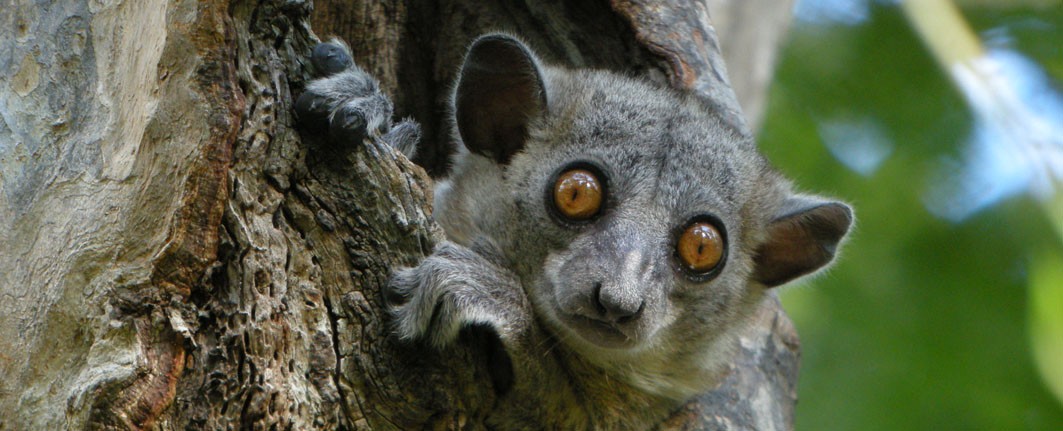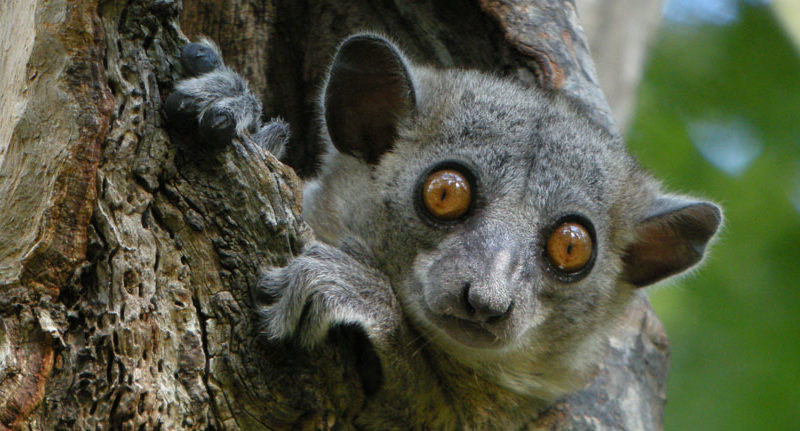
Madagascar Sportive Lemurs – Unique Nocturnal Primates of the Island
Madagascar is home to an incredible diversity of lemurs, and among the most fascinating are the Madagascar Sportive Lemurs. These intriguing nocturnal primates belong to a completely separate family and are easily recognized by their vertical posture, rounded bodies, and large expressive eyes. Their behavior, distribution, and unique adaptations make them a must-see for wildlife enthusiasts and travelers exploring the island’s forests.
What Are Madagascar Sportive Lemurs?
Madagascar Sportive Lemurs (family Lepilemuridae) are small to medium-sized nocturnal primates that differ significantly from other lemur families. Their bodies are compact, their ears are large and prominent, and they typically maintain a vertical position while resting and moving.
During the day, they are often found roosting in tree cavities or dense tangles, camouflaged from predators and visitors. At night, they display remarkable agility—leaping between trees with precision while maintaining their upright stance.
Distribution and Habitat of Madagascar Sportive Lemurs
These lemurs are distributed throughout Madagascar, occupying a wide range of forested habitats—from humid rainforests to dry deciduous forests and spiny forests. Their adaptability to different ecosystems has contributed to their wide distribution across the island.
Local guides often know the exact locations of their sleeping sites, making it possible for visitors to observe them during both day and night walks.
Identification: How to Recognize Madagascar Sportive Lemurs
Key Physical Traits
-
Size: Similar to dwarf lemurs but with a more upright posture.
-
Ears and Eyes: Prominent ears and large, reflective eyes adapted for nocturnal life.
-
Posture: Frequently seen sitting vertically, occasionally making powerful leaps between branches.
Distinguishing from Woolly Lemurs
Madagascar Sportive Lemurs are often confused with woolly lemurs. However, woolly lemurs have less prominent ears, pale stripes on the backs of their thighs, and are more likely to be found huddled in family groups during the day. In contrast, sportive lemurs are usually solitary and more elusive during daylight hours.
Species Diversity of Madagascar Sportive Lemurs
The number of recognized Madagascar Sportive Lemurs species has expanded dramatically in recent decades. Currently, scientists identify 26 species, and new species may still be described.
Although they look very similar at night, subtle differences in size, coloration, ear prominence, and geographic location help researchers distinguish them. Interestingly, it is uncommon for two sportive lemur species to coexist in the same area, which simplifies identification by region.
Vocalizations and Behavior of Madagascar Sportive Lemurs
Voice and Calls
Sportive lemurs are highly vocal, especially at the beginning of the wet season. Their calls consist of emphatic grunts, squeals, and screams that echo through the forest at night—an unforgettable experience for night trekkers.
Daily Habits
-
Daytime: They sleep in tree cavities, forks, or dense vegetation, well-hidden from predators.
-
Nighttime: They emerge to feed on leaves, fruit, and nectar, moving efficiently through the canopy with vertical leaps.
-
Reproduction: Breeding habits remain poorly studied, but most species give birth to a single young at the start of the wet season.
Where to See Sportive Lemurs in the Wild
For travelers eager to encounter Madagascar Sportive Lemurs, night walks in forests across the island offer excellent opportunities. National parks such as Ranomafana, Andasibe-Mantadia, and Kirindy are prime locations.
One notable species, the Small-toothed Sportive Lemur, can be observed in Ranomafana National Park, where its darker coloration and agile movements make for a thrilling wildlife experience.
Why Madagascar Sportive Lemurs Are Important
The presence of Sportive Lemurs is a vital indicator of forest health. As leaf and nectar feeders, they play an essential role in seed dispersal and ecosystem balance. Protecting their habitats also means preserving the broader biodiversity of Madagascar’s forests.
Tips for Observing Madagascar Sportive Lemurs
-
Join guided night walks – Experienced local guides can locate sleeping sites and increase your chances of sightings.
-
Bring a good flashlight or headlamp to catch the reflective shine of their large eyes.
-
Stay quiet and patient – Sportive lemurs are shy and may take time to reveal themselves.
-
Visit during the wet season for increased vocal activity, making it easier to locate them.
Final Thoughts on Madagascar Sportive Lemurs
Sportive Lemurs are a unique and captivating part of Madagascar’s wildlife heritage. With their solitary behavior, vocal calls, and vertical leaping movements, they offer visitors a glimpse into the island’s evolutionary wonders. Whether you’re a wildlife photographer, researcher, or curious traveler, encountering these lemurs in their natural habitat is an unforgettable experience.
HT AGENCY TOURS
Luxury Madagascar with the best luxury African safari tours packages. Discover your next perfect destination with HT Agency Tours

